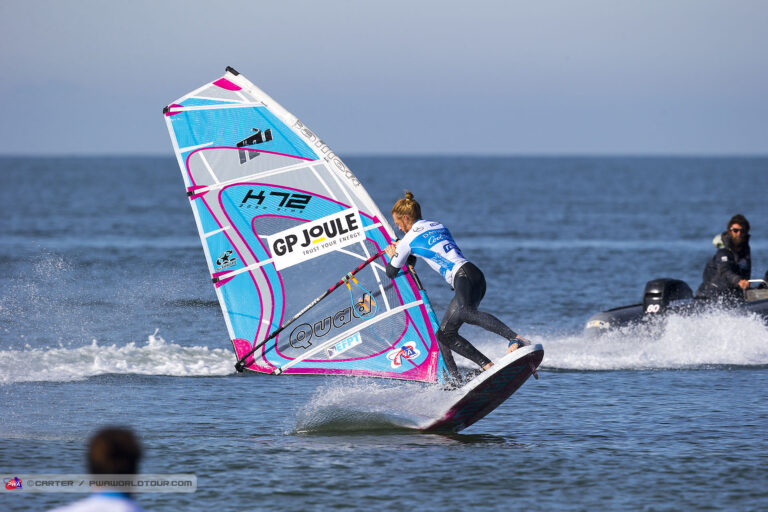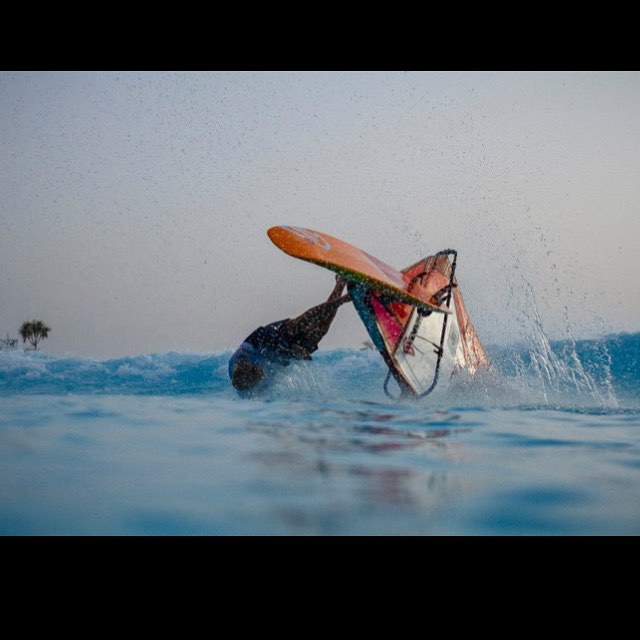Love it or hate it tow-in windsurfing is providing a great way of getting on the water when the wind doesn’t show up, especially at events when the show must go on. But tow-in windsurfing isn’t only for the pro windsurfers, have you ever thought about giving it a go yourself?
Here’s our dummies guide to tow-in windsurfing, written by tow-in king Adam Sims, that will get anyone up and riding… well, if you have a boat/ski/winch!
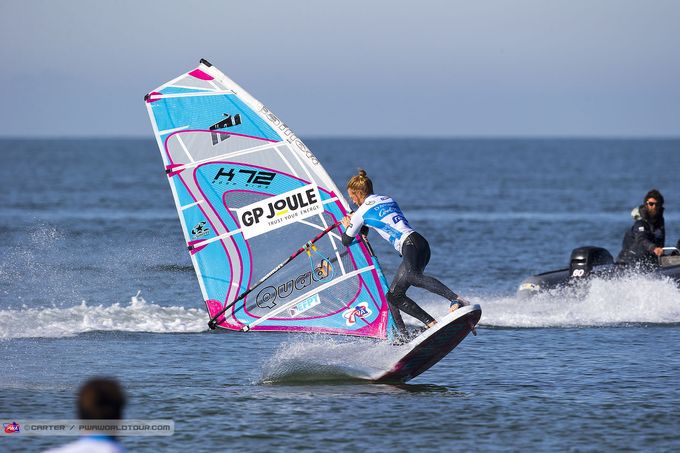
A freestyle board is ideal but a freestyle wave or even a wave board would work, just it will restrict your moves you can try. On a freestyle board your options are much more open and on a more wave orientated board you’ll be limited to bigger moves, for anyone who watched Ricardo Campello during the tow-in action here in Sylt should not focus too much on him, he is insanely talented and can do things on a wave board that no one can do. Ah and the volume should be between 90-100kg, my tow-in board is about 90l, I can just float on it at the end of moves but 100l would be a little better if you are just getting going.
2 – SailSomething flat and responsive. My Sailloft Quad is ideal as the outline is great and when I flatten it off it is very responsive to any small movements i make. You don’t want anything with too much profile as it will feel sluggish when you go through moves, so if you have a deep profile sail just trim it tight and flat. For the size, take a 4.4m or around this, easy and light to throw yet big enough to give lift and respond more to your hand movements.
3 – Boat/Ski/Winch?Well they all work, just you need to be going quite quick. If your ‘pulling device’ is not strong enough then simply use the ‘slingshot effect’, basically aim at whatever is pulling you until it is at maximum speed then carve out as hard as you can to the side and you’ll feel a much bigger acceleration, let go at the point you reach the maximum speed, this may take a couple of practice runs.
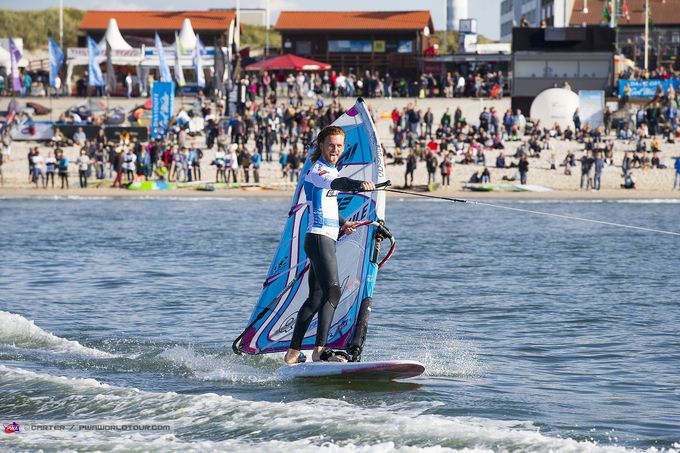
This is the hardest part with tow-in but myself and a few guys work out a method during the early days of tow-in. A lot of guys used to start with the sail in the air, or try to beach start, these all work if you are very skilled and there are no waves but the best and safest way is to simply start with the sail flat on the water, on the side you want it to be when you take off for your move and with the mast angled back from the board, the board needs to point at whatever is pulling you. Then the clew of the sail should be just touching the back of the board or within 10-20cm or so, this lets the water flow under the rig until you reach enough speed that the apparent wind helps lift the sail, it should be fairly easy to lift once this wind kicks in and you can simply flick the mast up and catch the boom. Then once you have the boom step in the straps early, meanwhile the driver needs to continuously build the speed, once you are in the straps then up to full speed quickly as it takes the pressure out of your arms on the bar you are holding.
5 – First MovesThe flaka or funnel is the one to go for. It’s the easiest move and the one you will most likely to land first. After this you can try bouncing it into a second one by pushing the boom down and back like you are taking off for a shaka at the same moment you push your back foot down to pop the second time. Other moves to try would be a spock, quite tricky as it is a different take off technique and the rails seem to catch easier for some reason or if you have a wave or small ramp then a forward or ponch are quite easy.
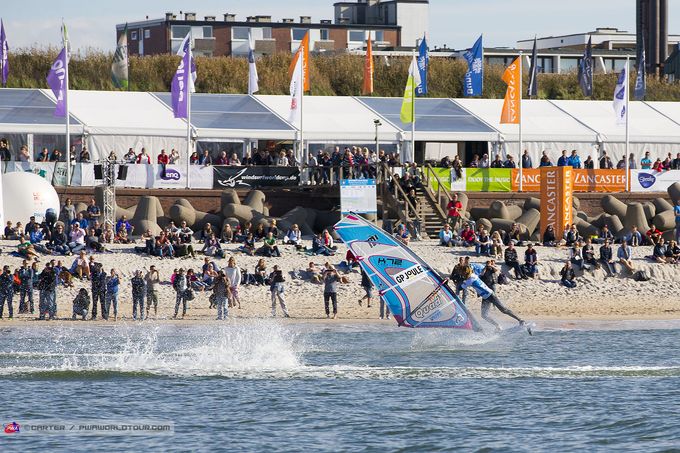
– Too short a tow-line.
– Going too slow
– Taking off too soon after letting go of the line, let yourself settle for a brief moment but make sure you keep the speed up.
– Doing tow-in if you can go windsurfing. It’s fun in wind, you can pop super high but in the end windsurfing is where it is at.


